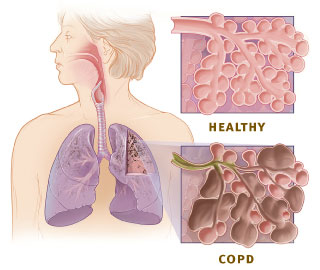Metformin is a Biuagnide. It
was derived from the herb Galega
officinalis (French lilac, also known as Goat’s Rue or Italian
Fitch)
and has been used as a traditional botanical (tea infusion) for over 3,000 years to relieve polyuria (frequent urination) and halitosis (sweet odor on the breath), both are now well known symptoms of diabetes.
and has been used as a traditional botanical (tea infusion) for over 3,000 years to relieve polyuria (frequent urination) and halitosis (sweet odor on the breath), both are now well known symptoms of diabetes.
- It was approved for the treatment of hyperglycemia in Britain since the late 1950’s, Canada in the 1970’s and U.S. in 1995.
- Metformin is the most widely prescribed anti-diabetes drug (over 120 million prescriptions filled yearly worldwide).
Mechanism of action
•
It decreases hepatic glucose
production by inhibiting gluconeogenesis and glycogenolysis. Enhances
secretion of GLP-1 and peptide YY, which in turn affect systemic mechanisms
including reducing hepatic glucose production through glucagon suppression and
enhanced glucose-dependent insulin secretion
•
Delays intestinal absorption of
glucose
• Enhances insulin sensitivity by
increasing peripheral glucose uptake and utilization.
•
Some other unclear pathway
What is the Waiting Time to Show Effect?
•
Usually, dose is gradually increased
from 500 mg-1000 mg-1500 mg-1700 mg-2000 mg-2550 mg
•
Gradual Increment lessens GI side
effects
•
May take days together to show its’
full effect, if prescribed in this manner.
•
Mostly, effect is seen after 1500
mg/day dose is reached.
Whether Extended Release or Plain tablet?
- Extended Release is better tolerated-Maximum dose 2000 mg/day. Metformin should be taken with meals to help reduce stomach or bowel side effects that may occur during the first few weeks of treatment. Swallow the extended-release tablet whole with a full glass of water. Do not crush, break, or chew it.
- Plain tablet-maximum dose-2550 Mg
What are
the types of technology of manufacture?
•
Dissolution/erosion
controlled release
•
Diffusion
controlled release
•
Osmotic
controlled release
When to be taken?
If in single dose
- Morning!
Or
- Evening!
If, taken in the evening, it works better by suppressing hepatic
neoglucogenesis that occurs towards dawn.
What is passing in Stool? What is Ghost Pill?
Some patient see passing out of tablet in stool. They
apprehend, the medicine might not be working. Why is passing out in stool?
It is the technology for delayed release of the ingredients
and un digested portion comes out in feces.
Important Side Effects!
•
Vomiting (Gastritis) and Diarrhea!
•
Headache
•
Lactic Acidosis
•
Sometimes B12 deficiency: vitamin
B-12 concentrations of ≤ 150 pmol/l; Dietary calcium or Vit. B12
supplementation
The mechanism of vitamin B12 deficiency
with metformin is undoubtedly due to malabsorption of vitamin B12 at its
absorption site in the terminal ileum. Absorption of the vitamin B12-intrinsic
factor complex is calcium dependent and metformin interferes with its’ effect
on calcium-dependent membrane action in the terminal ileum.
In support of this hypothesis is evidence
that dietary calcium supplementation reverses metformin-induced vitamin B12
malabsorption.
Can it be prescribed to Patients of Impaired Kidney
Function?
What is Impaired Kidney Function
•
Generally,
90-120 ml/minute/1.73 m2 of eGFR is taken as normal value.
•
Levels below 60 mL/min/1.73 m2 for
3 or more months are a sign of chronic kidney disease.
•
A GFR
lower than 15 mL/min/1.73 m2 is a sign of kidney failure and
requires immediate medical attention.
•
Hence, in
addition to the level of serum creatinine (creatinine levels reach 1.4 mg per
dL {120 μmol per L) in women or 1.5 mg per dL (130 μmol per L) in men}.
Labeling
Change Recommendation-FDA: FDA concluded, from the review of
studies published in the medical literature, that metformin can be used safely
in patients with mild impairment in kidney function and in some patients with
moderate impairment in kidney function.
•
eGFR below 30 mL/minute/1.73 m2:
Metformin is contraindicated
•
eGFR between 30-45 mL/minute/1.73 m2:
Starting metformin is not recommended.
•
Patients taking metformin whose eGFR
later falls below 45 mL/minute/1.73 m2: assess the benefits and
risks of continuing treatment. Discontinue metformin, if the patient’s eGFR
later falls below 30 mL/minute/1.73 m2.
Precautions:
- Before starting metformin, obtain the patient’s eGFR (glomerular filtration rate estimating equation).
- It is recommended to have the eGFR estimated in patients of T2DM before starting of Metformin or metformin in combination; also periodically measure, while on the medication.
•
Obtain an eGFR at least annually in
all patients taking metformin. In patients at increased risk for the
development of renal impairment such as the elderly, renal function should be
assessed more frequently.
•
Discontinue metformin at the time of
or before an iodinated contrast imaging procedure in patients with an eGFR
between 30 and 60 mL/minute/1.73 m2; in patients with a history of
liver disease, alcoholism, or heart failure; or in patients who will be
administered intra-arterial iodinated contrast. Re-evaluate eGFR 48 hours after
the imaging procedure; restart metformin, if renal function is stable.
Other Uses!
•
PCOS (Polycystic Ovary Syndrome)
•
Cancer
(Breast, Colon, Lung, Pancreas and
Prostate)!
It is believed that systemic effect of
metformin manifested by the reduction of circulating level of insulin and
insulin-like growth factor 1 (IGF-1) might be associated with anticancer action.
Old is Gold
...
Click here to Subscribe news feed from "Clinicianonnet; so that you do not miss out anything that can be valuable to you !!
...








